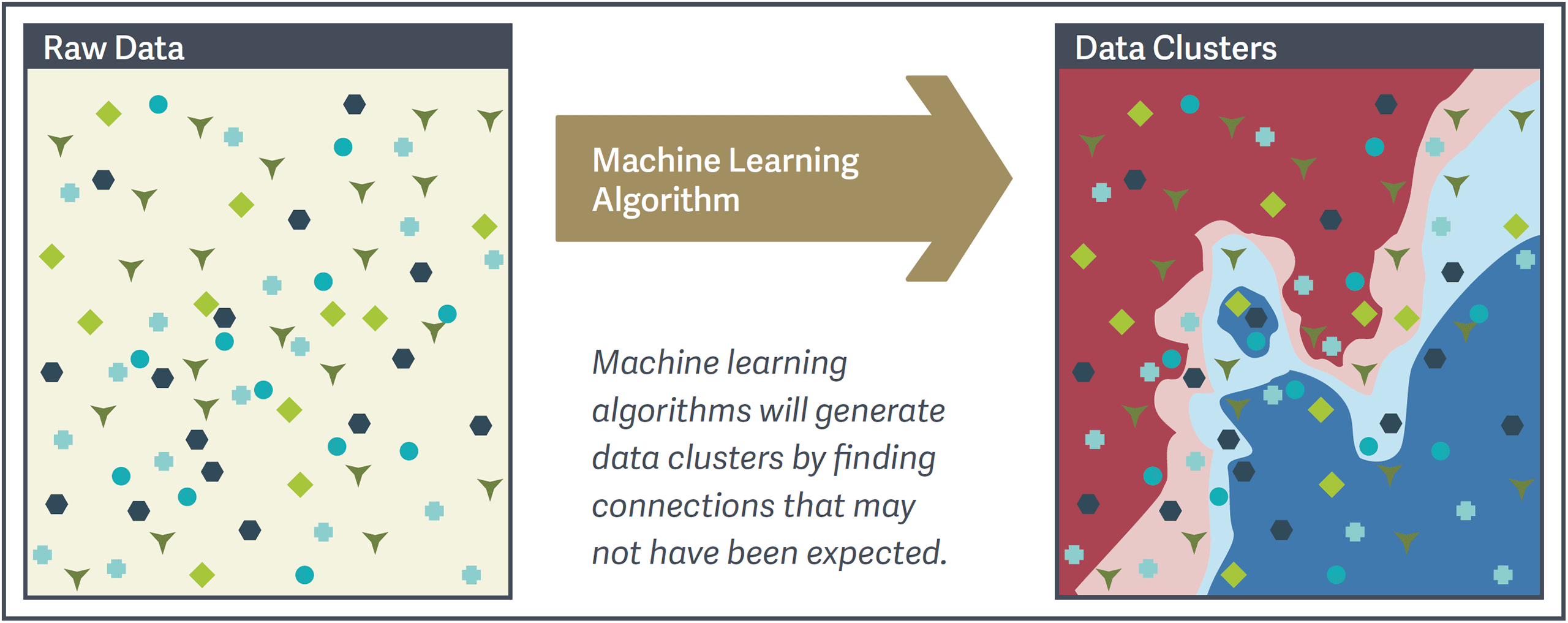Machine Learning
Machine learning, broadly defined, involves computer programs and algorithms that automatically improve their own performance at specific tasks through experience. The primary objective of these tasks, whether they involve classification or relating various inputs to expected outcomes, is out-of-sample performance. The algorithm is first trained on a sample of inputs for which the target output responses are known. Training enables the algorithm to learn highly complex and intricate relationships in high-dimensional data, rather than pre-imposing assumptions on how inputs and outcomes are related. The algorithm’s performance is then assessed on a different sample to determine how it would perform in the real world, with new data.

Enabling algorithms to discover relationships in the data has led to significant performance improvements. The algorithms have the potential to replace costly manual, repetitive tasks and to complement problem-solving and decision-making tasks in the workplace. Machine learning techniques perform exceptionally well when combined with dramatic improvements in computation speed, e.g., the use of graphical processing units (GPUs), even with datasets containing millions of records.
The breadth and number of applications of machine learning continue to rise rapidly.
- Intellectual Property:
- Classifying patents and drugs in early stages of development, according to the likelihood of their future success
- Recognizing common features of products involved in standard essential patent filings and challenges
- Finance:
- Identifying relationships between stock returns and various factors to develop stock-picking strategies
- Labor Economics:
- Relating employment performance to online, pre-interview screening tests
- Linking the management training of supervisors to survey-based measures of employee motivation
-
Q&A
Understanding Algorithms, Data Structures, and Technical Systems in Litigation

-
Featured Expert
Jimmy Royer
Principal, Boston, Paris, Brussels, Montreal

-
Health Care Bulletin
Making More Precise Health Care Decisions with Machine Learning

-
Featured Expert
Lisa B. Pinheiro
Managing Principal, Brussels, Montreal, Paris

-
Featured Expert
Michael D. Mitzenmacher
Thomas J. Watson, Sr. Professor of Computer Science, Harvard John A. Paulson School of Engineering and Applied Sciences



